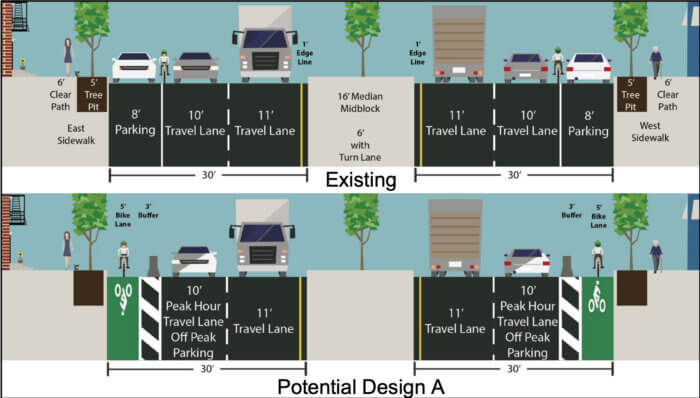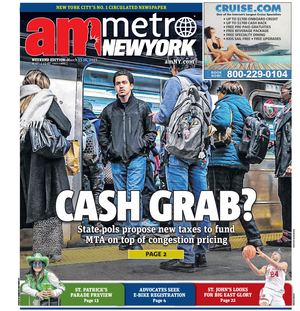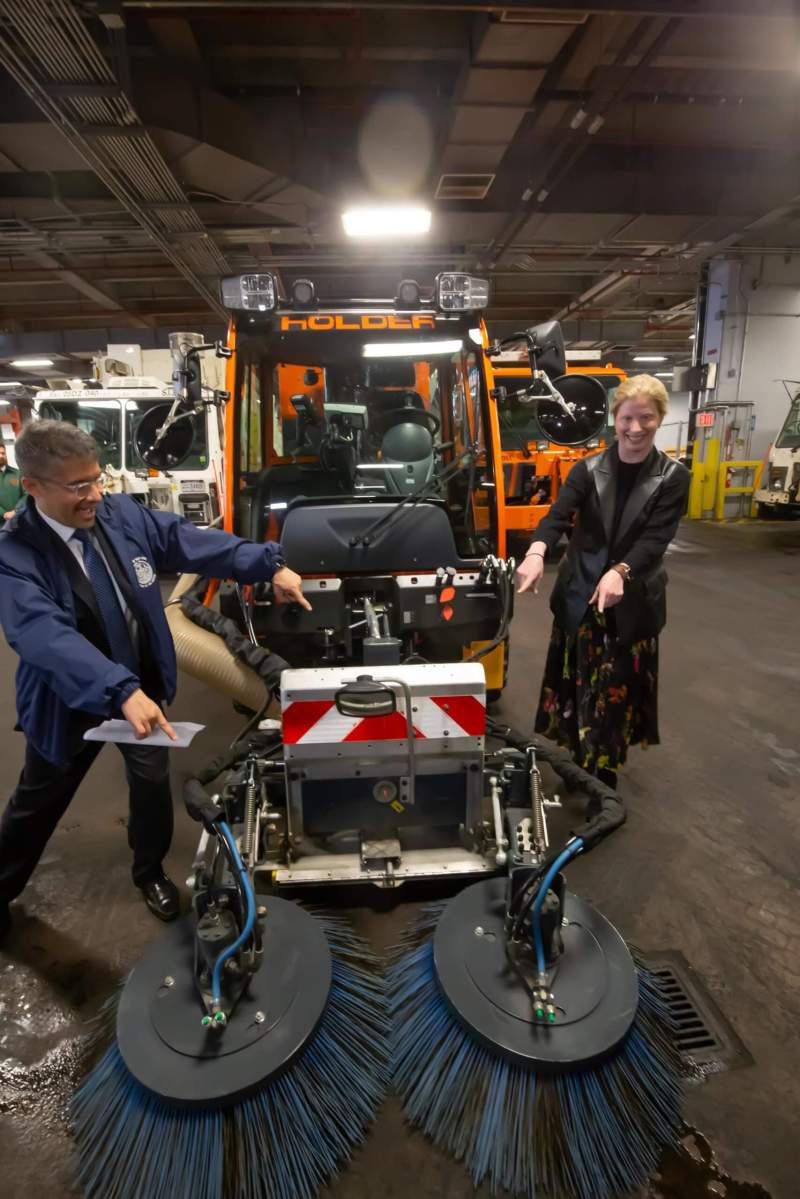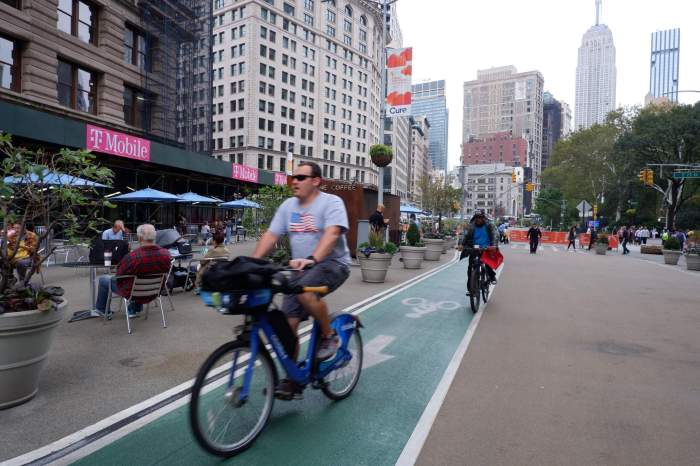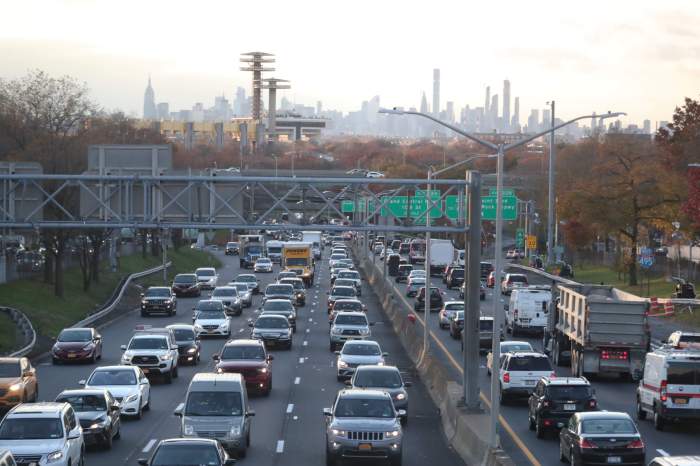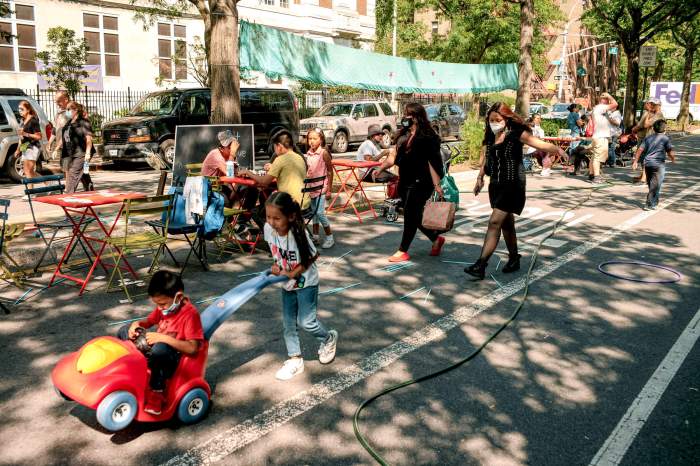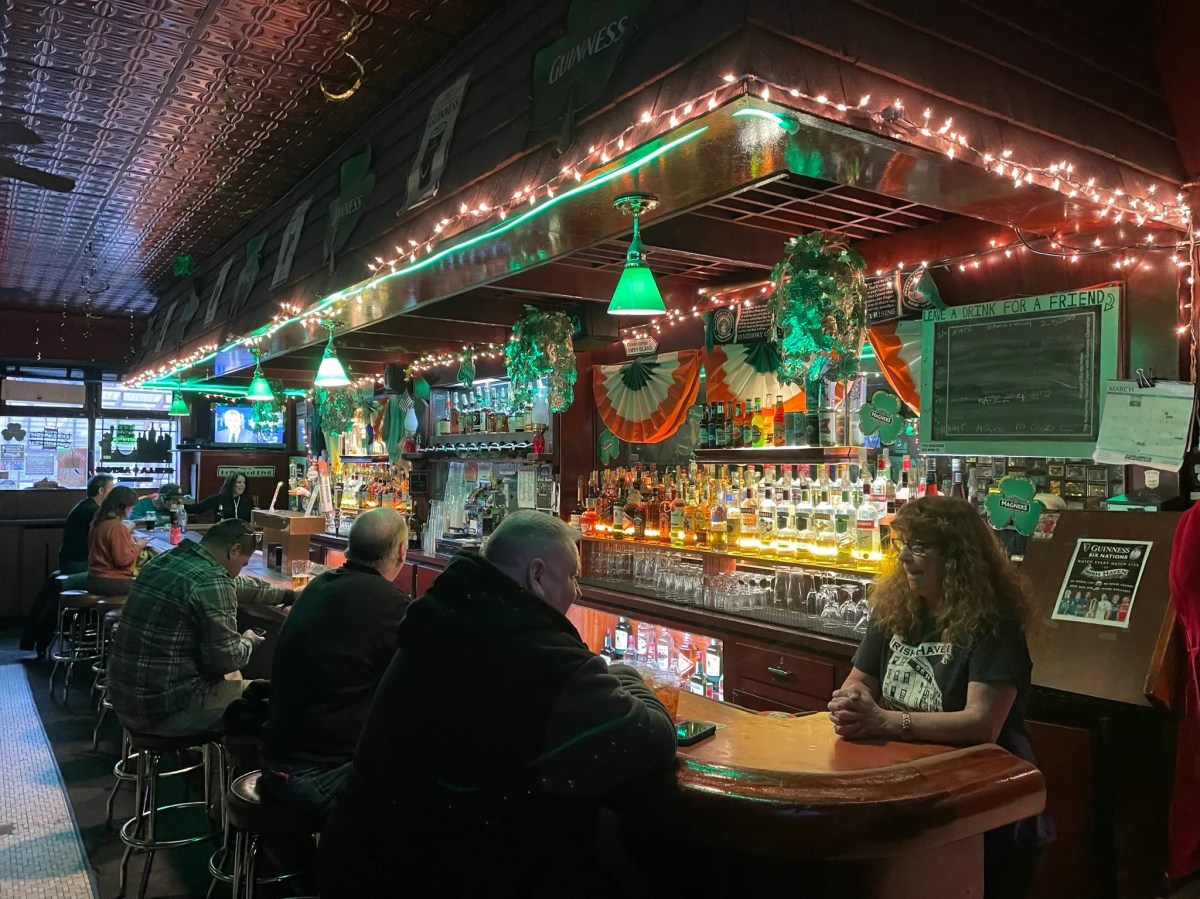They’re making some sweeping changes!
The city’s Department of Sanitation debuted smaller-sized street cleaning vehicles Monday night to regularly clear debris from the Big Apple’s more than 100 miles of protected bike lanes.
Six compact sweepers equipped with new mechanical brushes rolled out on July 4 and will be able to cover all 133.5 miles of the protected cycle paths once a week, according to DSNY officials.
New York’s Strongest first launched the pint-sized vehicles last winter to plow snow from bike lanes, and has since refitted some of them with brush attachments.
Agency Commissioner Jessica Tisch showed off the new equipment during a tour with community and ethnic media at Sanitation’s Spring Street garage on the West Side of Manhattan on May 4.
“This is going to be the first time that New York City has smaller micro-operability machines that actually do the sweeping of the bike lanes, and we think that this is going to make things both cleaner for New Yorkers in general but also for the community that uses bike lanes to do their work, the deliveries, this is going to make it also much safer for them,” Tisch told reporters at the time, according to a video clip posted on Twitter by the local news blog the Roosevelt Islander.
DSNY currently has 45 of the smaller vehicles on hand, compared to its 433 full-sized sweeping trucks, according to spokesperson Vincent Gragnani.
The agency will get four more broom attachments for a total of 10 later this summer.
They need fewer brushes than plows because DSNY has to clear lanes quicker after snowfall compared to regular sweeps of only once or twice a week, Gragnani said.
The city has allocated $6.7 million to buy the equipment and another $2.8 million to staff the mini machines.
Cycling boosters have long lobbied the city to clear the growing roster of green-painted lanes.
“It’s great news that these things are on the street,” said Jon Orcutt, director of advocacy for the group Bike New York.
The new vehicles will also allow the Department of Transportation to build bike lanes narrower so they can’t be blocked by cars, the advocate noted.
“What we’re hoping is we’ll see more car-proof bike lane design come out,” Orcutt said. “Today we have so-called protected bike lanes, say on Grand Street in Williamsburg or on Northern Boulevard in Queens, but they’re 11 feet wide and they’re just full of cars and trucks all day.”
DOT in the past has claimed it couldn’t install physical barriers on narrower bike paths, because it still needs to keep them wide enough to accommodate street sweepers and snow plows, Streetsblog reported.
“We are actively working with our partnering agencies and welcome the use of new vehicles that will help keep bike lanes clear,” said DOT spokesperson Tomas Garita in a statement. “We understand the need to design bike lanes to be clear for cyclists’ safe, comfortable use and we’ll continue working on projects like Better Barriers to find new ways to build protected infrastructure.”
The agency may already be shifting gears.
Transportation officials proposed a 5-foot bike lane bordered by a solid barrier as a possible redesign along McGuinness Boulevard in northern Brooklyn, according to a June 30 presentation to the local community board.
The design “[c]reates barrier protected bicycle lane with [a] combination of materials used to prevent blockage,” the slides read.
